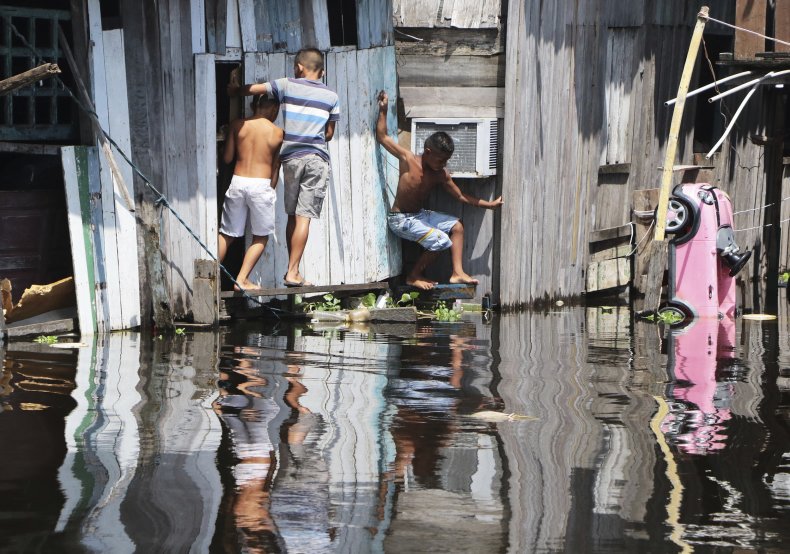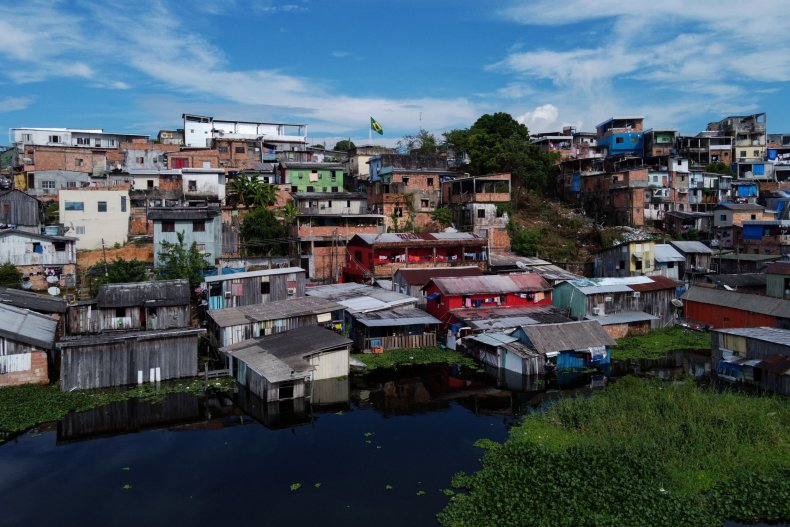Over 450K Impacted as Amazon Rivers Approach Record Flood Levels in Brazil
About 450,000 people around Brazil's largest city have been affected by overflowing rivers from the Amazon rainforest in what data from the Manaus' port authorities shows to be a new high in flood records.
One river, the Rio Negro, has reached a depth of 29.98 meters, its highest since records began in 1902. The Solimoes and Amazon rivers are also approaching record-breaking levels, causing overflow in streets and houses across dozens of municipalities.
The sweeping floods are the product of uncommonly high precipitation levels caused by the La Nina weather anomaly, in which central and eastern Pacific Ocean currents alter climate patterns across the world. The U.S. Environmental Protection Agency and National Oceanic and Atmospheric Administration have designated human activity and climate change as causes of worsening weather phenomena like La Nina.
Data from Brazil's Geological Survey reported that seven of the 10 largest floods in the Amazon were in the last 13 years.
"If we continue to destroy the Amazon the way we do, the climatic anomalies will become more and more accentuated," said Virgílio Viana, director of the Sustainable Amazon Foundation. "Greater floods on the one hand, greater droughts on the other."
For more reporting from the Associated Press, see below.

Large swaths of Brazil are currently drying up in a severe drought, with a possible shortfall in power generation from the nation's hydroelectric plants and increased electricity prices, government authorities have warned.
But in Manaus, 66-year-old Julia Simas has water ankle-deep in her home. Simas has lived in the working-class neighborhood of Sao Jorge since 1974 and is used to seeing the river rise and fall with the seasons. Simas likes her neighborhood because it is safe and clean. But the quickening pace of the floods in the last decade has her worried.
"From 1974 until recently, many years passed and we wouldn't see any water. It was a normal place," she said.
When the river does overflow its banks and flood her street, she and other residents use boards and beams to build rudimentary scaffolding within their homes to raise their floors above the water.
"I think human beings have contributed a lot (to this situation)," she said. "Nature doesn't forgive. She comes and doesn't want to know whether you're ready to face her or not."
Flooding also has a significant impact on local industries such as farming and cattle ranching. Many family-run operations have seen their production vanish under water. Others have been unable to reach their shops, offices and market stalls or clients.
"With these floods, we're out of work," said Elias Gomes, a 38-year-old electrician in Cacau Pirera, on the other side of the Rio Negro, though noted he's been able to earn a bit by transporting neighbors in his small wooden boat.
Gomes is now looking to move to a more densely populated area where floods won't threaten his livelihood.
Limited access to banking in remote parts of the Amazon can make things worse for residents, who are often unable to get loans or financial compensation for lost production, said Viana, of the Sustainable Amazon Foundation. "This is a clear case of climate injustice: Those who least contributed to global warming and climate change are the most affected."
Meteorologists say Amazon water levels could continue to rise slightly until late June or July, when floods usually peak.


